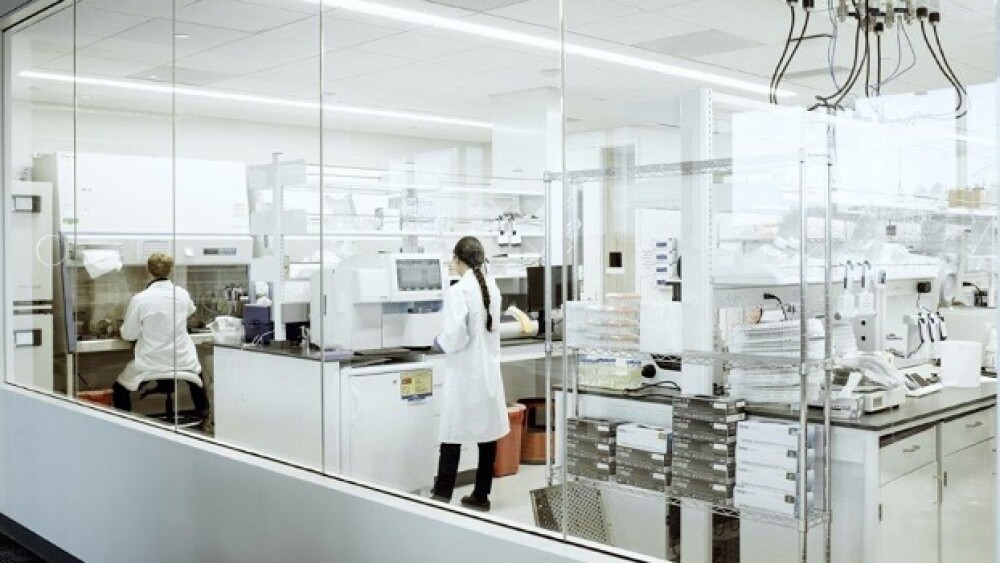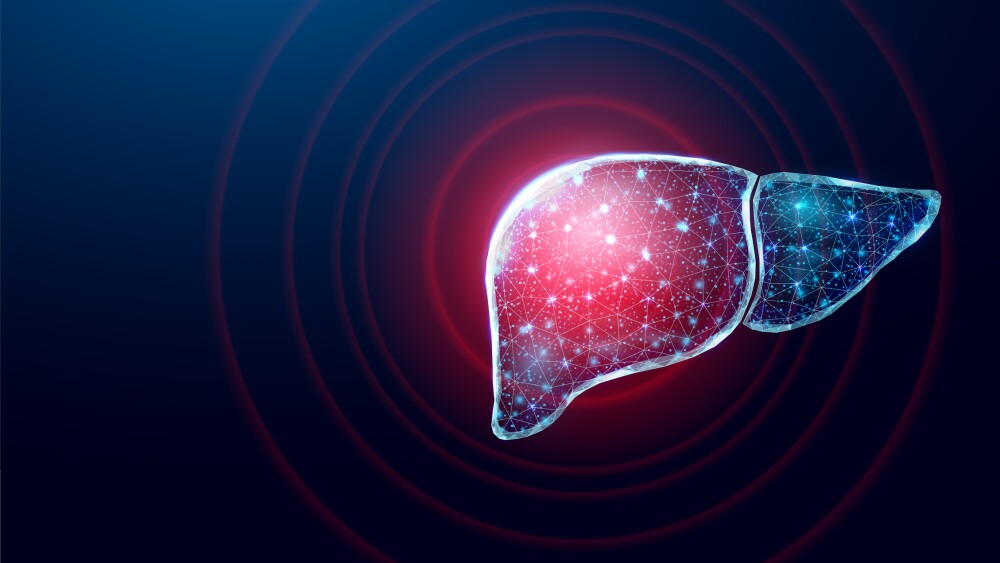With its hypoimmune technology, the company looks to reshape the future of cell and gene therapy.
Pictured: A lab at Sana Biotechnology/Courtesy of Sana Biotechnology
Since its inception in late 2018, Sana Biotechnology has garnered significant attention for its unique cell and gene therapy approaches. The company sees promise in its hypoimmune (HIP) program and stem cell-derived therapies to reshape traditional therapeutic approaches to a wide range of conditions.
Earlier this year, Sana Biotechnology launched ARDENT, the company’s first HIP proof-of-concept study in patients. The Phase I trial investigates using SC291, a HIP-modified CD19-targeted allogeneic CAR T cell therapy, for treating B cell malignancies.
The HIP platform has made waves as a potentially revolutionary strategy for overcoming immune rejection of allogeneic cells. HIP cells are engineered by depleting class I and II human leukocyte antigens (HLA) and overexpressing CD47 in order to protect the cell from adaptive and innate immune system responses.
This cloaking strategy to prevent immune rejection of grafted cells has proven effective in animal models, including in non-human primates.
“The really important remaining question is, does this science translate into humans?” Steve Harr, president and CEO of Sana Biotechnology, told BioSpace.
“ARDENT aims to test whether SC291 can indeed overcome immune rejection in patients, which, if true, should lead to longer persistence of CAR T cells and higher rates of durable complete responses for patients,” said Doug Williams, head of research and development at Sana. “If we can demonstrate persistence and durable responses in the clinical setting, we think we have an important therapy for patients and an important read into the probability of success for other CAR T cell programs we have moving into human testing.”
A Promising B Cell Depleter for Autoimmune Diseases
SC291 intends to expand beyond oncology applications into autoimmune diseases, as Sana Biotechnology announced at their 2023 R&D Day. “This is a field where we think CAR T cells could be as disruptive for patient outcomes as they have been in hematologic cancers,” Harr said.
Previous studies have validated the therapeutic targeting of B cells across many autoimmune disorders. Aberrant B cells are involved in the pathogenesis of an estimated 75 different autoimmune diseases, Williams said.
He credits a recent lupus nephritis study for turning the conversation toward CAR T cell therapy and the potential for a functional cure for autoimmune diseases.
“What we have learned across multiple settings is that the deeper the B cell depletion is, the deeper and more durable the patient’s response is. CD19-targeted CAR T cells are the best B cell depleting agent discovered to date,” Harr said. He added that if SC291 proves effective in the ARDENT trial, this demonstrated B cell depleting therapy can be manufactured at scale to treat tens of thousands of patients per year in oncology and in autoimmune diseases.
The scalability of the HIP platform and the potential for improved patient outcomes across multiple diseases remains central to Sana Biotechnology’s R&D strategy. The team is currently exploring the final trial design for SC291’s move into autoimmune diseases, said Williams. He anticipates the trial will likely use a basket design, including lupus nephritis and other autoimmune conditions.
Bringing Precision and Scale to Type 1 Diabetes
Sana Biotechnology plans to tackle an additional proof-of-concept trial this year utilizing HIP-modified primary pancreatic islet cells for type 1 diabetes, a disease where the patient’s immune system destroys their own. Previous studies effectively transplanted islet cells but relied on substantial immunosuppression to prevent rejection.
“Others have successfully transplanted islet cells with substantial immunosuppression, resulting in normal blood glucose with no insulin treatment for many years,” Harr said. “However, most patients cannot tolerate immunosuppression for a prolonged duration, and manufacturing is difficult to scale, impacting the ability for it to have a meaningful impact as a solution for diabetes.”
The upcoming trial intends to show that HIP islet cells can be transplanted into patients without immunosuppression. The goal of the HIP modifications is to overcome both allogeneic and autoimmune destruction of cells, allowing for transplantation and survival of cells with no immunosuppression. Sana’s goal is to create a product that allows patients to sustainably achieve normal blood glucose with no insulin therapy and no immunosuppression.
Transplanting cells without immunosuppression has the potential to provide huge benefits for patients, Williams said. He added that immunosuppression can increase the risk of infection and cancer and may negatively affect the transplanted cells.
If successful, the trial will be a stepping stone for Sana’s SC451 HIP program in type 1 diabetes. Preclinical data indicate that the HIP-modified stem cell–derived pancreatic islet cells evade rejection and normalize glucose levels in humanized mice. Sana has also shown that HIP-modified islet cells are able to survive and normalize blood glucose in diabetic non-human primates.
“We think that positive data from our upcoming study of HIP-modified primary islets cells will move a cure for type 1 diabetes from something that is possible to something that is inevitable,” Harr said. “Our long-term product that we hope to be able to manufacture at scale for this large unmet need is the SC451 program. Our hope is that we will file an IND on this program sometime next year.”
Data on the Horizon: Key Program Areas Set to Deliver Results
These two proof-of-concept trials were among the main topics of conversation at Sana Biotechnology’s R&D Day. The much-anticipated trial results represent a critical period for the company in the coming next several quarters that may have an impact for many years.
“The near-term [is] clearly in focus. We are going to start to see data in a couple of very important program areas over the course of this year and into next year,” Williams said.
For the R&D team at Sana Biotechnology, these trials combine years of hard work to establish the company’s HIP platform. Successfully evading immune rejection with this platform could radically reshape the landscape of cell and gene therapy.
“Overcoming immune rejection of allogeneic cells has the potential to be one of the most transformative discoveries we have seen in years,” said Harr. “I think if we get it right, it changes the way everybody thinks about what is possible with cell-based therapies going forward.”
As the discovery teams eagerly await trial results, the leadership at Sana remains steadfast in their excitement for the future.
“We have a high degree of confidence based on an enormous body of data preclinically that the hypoimmune platform is going to be a revolutionary approach to allogeneic transplantation,” Williams said. “The proof will be in the data, though, as human biology has a tendency to teach us important lessons.”
Caleigh Findley is a freelance science writer based in Colorado. She can be reached on LinkedIn.





